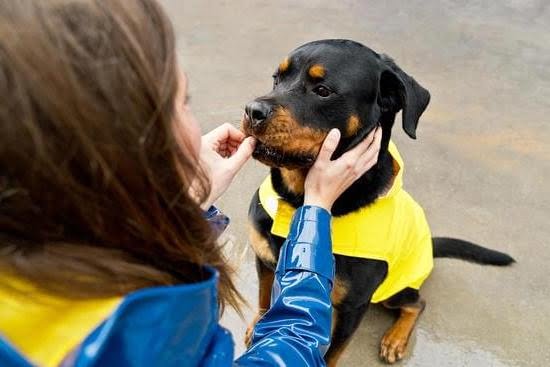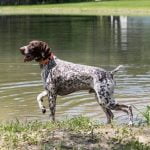Introduction
Training a dog to fetch specific items can be an immensely rewarding experience for both pet and owner. Not only does it teach obedience, but it also demonstrates the power of positive reinforcement and extends the bond between you and your pet. Additionally, teaching your dog to fetch specific items can be beneficial in multiple ways such as providing activity on days when you are unable to take them on walks or runs outside, supplying sport activities that don’t involve competition or agility courses, and even providing a form of therapy for the elderly or disabled who may have difficulty retrieving items for themselves. Training your pet to fetch specific objects has been proven to increase intelligence levels and strengthen bonds with owners.
There are several steps needed that must be taken in order to successfully train your pup. First, selecting an item will come down to personal preference; however, it’s best to pick one that is small enough for your pup’s mouth yet won’t become lodged in their throat if they ingest it unintentionally. Next comes training cues: use verbal words such as “fetch” or “bring me [item],” hand signals such as pointing at the desired object or using eye contact, or both! Afterwards comes repetition; you’ll want to practice these exercises multiple times each day until they understand what they need to do when being asked. Finally comes reward! Working with your pup through patience and positive reinforcement can encourage them learn faster – thus honing in their skill set quicker than negative punishments or force-based methods.
Selection of Appropriate & Appropriate Training Tools
When training your dog to fetch specific items, selecting the appropriate and appropriate tools is extremely important. For instance, for a smaller or toy breed of dog, selecting a lightweight toy would be best since this type of dog won’t need a larger item like balls or frisbees. On the other hand, for bigger breeds such as Labradors or Golden Retrievers, balls and frisbees are more suitable as they can better handle the size and weight of these objects. In addition to this, there are many other types of toys available specifically designed for training your dog to fetch such as treat dispensing toys, retrieval puzzles and clickers which can be used to help building up your pet’s catch repetition and accuracy. Moreover, if using food rewards for training makes it easier for you to reward your pup whilst he is performing the desired behavior.
Develop a Consistent Command Word/Phrase That Your Dog Can Recognize
Developing a consistent command word or phrase that your dog can recognize is an important part of teaching them to fetch specific items. The first step involves deciding what word or phrase you want to teach your dog to understand as the command. When training, it is best to choose a word or phrase that will be easily recognized by your dog and not be confused with other words or phrases. Using short, memorable phrases such as “fetch” or “get it” are often effective in getting a dog’s attention and signaling them to perform the desired behavior.
Once a command has been established, it is important to use it consistently when training. This includes verbalizing the same command for every fetch session and emphasizing the same rewards for successful obedience. Teaching certain items, like tennis balls, should be done one at a time; this helps your pup better understand which item you are asking them to grab and remember it in future training sessions. Each time your pup follows through on the request with success, offer positive praise and reinforcement while holding up the correct item they retrieved when they come back to you. This will help reinforce the concept of what they were asked to retrieve. With consistent repetition and reinforcement, any pup can learn how to fetch specific items on cue!
Teach Your Dog To Fetch A Specific Item
It is possible for your dog to be trained to go and retrieve a specific item, such as a toy or a ball. Teaching your dog to fetch a specific item using this step-by-step process not only strengthens your bond with your pet but also gives them an opportunity to express their abilities.
Step 1: Start off by selecting what items you want the dog to be able to recognize. Choose items that are inexpensive and harmless in case they get lost during the training process. It is recommended to have multiple objects of the same color, shape or size that makes each item easily distinguishable from one another. You can start by teaching only one type of object such as balls then move to other categories e.g., toys, bones etc.
Step 2: Show your pup the item for the first time and say its name clearly so the dog can learn it (e.g., “ball!”). Keep showing and saying the object’s name multiple times until your pup learns it by heart.
Step 3: Place several objects on the ground and encourage your pup to pick up one of them by pointing/gesturing towards it while saying its name (e.g., “fetch ball”). Praise him when he brings it back and do not forget to reward him with treats or other forms of positive reinforcement!
Step 4: Repeat steps 1-3 multiple times in different settings; indoors, outdoors etc…. Gradually increase complexity levels when doing so, eventually replacing random objects for items specialized for dogs (e.g., interactive toys). Lastly, continue rehearsing until Fido catches on quick enough and can identify each item at first sight!
Problem Solving
The key to an effective training session is problem solving. It is important to consider the individualized needs of your dog when beginning a new training routine. It is also important to go into the situation with a plan, develop strategies ahead of time, and ensure you have located any safety cues or necessary equipment. Here are some special tips and strategies that can make training your dog to fetch specific items even more successful:
1. Start slowly and be consistent with commands: Make sure to reward your pup for their hard work! In order for them to be successful quickly, they should practice the same commands over and over again.
2. Break down complex tasks: Complicated tasks can be overwhelming for dogs so break them down into smaller pieces and practice each part of the task separately until your pup fully understands it before moving on to the next part of the process. For example, when teaching your pup how fetch a specific type of object, give them a few version or types of objects at first so they can get used to retrieving different items without becoming overwhelmed.
3. My Dog First Method: If possible, always start from basics like name recognition first before introducing more advanced commands like “fetch” or “drop”. Start by teaching them what you want them to do in easy terms so that their attention stays focused on learning rather than trying to understand complex language and objectives.
4. Positive reinforcement: Rewarding is one of the most powerful tools in training and should be used as soon as possible after your pup responds correctly to a command or instruction. This reinforces their behaviour, encourages future success and will help develop an emotional bond between you both.
5. Use treats as lures: When teaching a new skill such as fetching an item, attaching treats or favorite toys onto items already within access can provide additional motivation – while also helping prevent frustration if they encounter difficulty mastering the skill initially.
Positive Reinforcement & Consistent Repetition
Training your dog to fetch specific items, such as a toy or ball, can be a fun and rewarding experience for both you and your pet. The best way to do this is with positive reinforcement techniques and consistent repetition. Start by taking whatever item you want your dog to fetch (a toy, ball, etc.) and hold it in front of them. Give your pup an affirmative command like “fetch” and praise them once they take it. The next step is to throw the item across the room or yard so that it will entice them to come back with the object in their mouth. As soon as they do, offer lots of praise and then reward them with a treat or special snack in order to reinforce their behavior. Repeat this process over several days until they have mastered the trick. Don’t forget to offer praise when they’ve successfully completed each step along the way. With time and patience, you’ll be able to teach your pup how to reliably fetch specific objects on command!
Conclusion
Once you have trained your dog to fetch specific items, your next step should be building up their skills and ability. Start with easy items like a tennis ball or toy, and work up to more difficult requests such as fetching a remote control or wallet. You can also try incorporating commands such as sit or stay before giving the item back to you. Additionally, practice other trick commands such as catch or roll over in order to build your dog’s confidence in its abilities. When it’s time to give complicated commands, remember the basics–stay calm and consistent with rewards for correct responses, and offer gentle corrections for incorrect attempts. With regular practice, your pup will quickly become an expert retriever!

Welcome to the blog! I am a professional dog trainer and have been working with dogs for many years. In this blog, I will be discussing various topics related to dog training, including tips, tricks, and advice. I hope you find this information helpful and informative. Thanks for reading!





